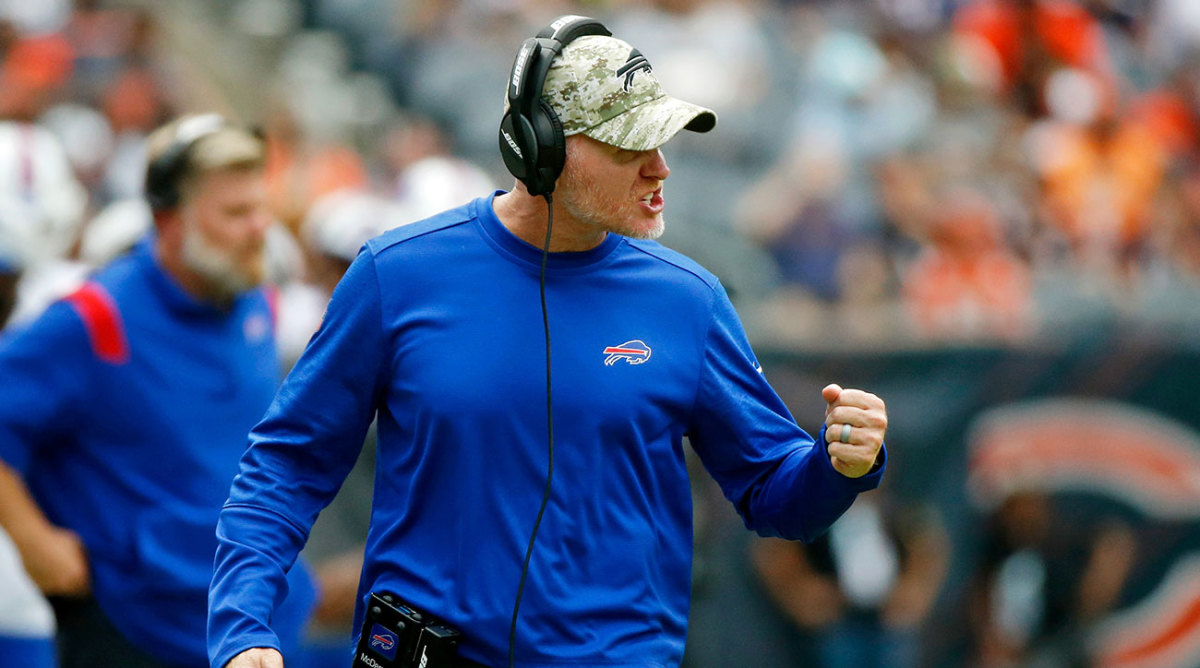How NFL Coaches Have Changed the Way They Explain Fourth-Down Conversion Attempts
Six weeks into the NFL season, we’re propelling toward another record-breaking year in terms of fourth-down conversion attempts. This is nothing necessarily new, as numbers have been on the rise every year since 2014. Adding an extra week to the season will shatter many records, but this is true on a per-game basis as well.
For some added context, here are the year-by-year totals since 2010, along with attempts per team per game, which accounts for the fact that four teams had byes last week.

The reasons for this are twofold. The first is that it’s obviously good business. Sometimes it takes a decade of whacking coaches over the head with the analytics (and it’s now been 12 years since Bill Belichick famously went for it in his own end late in a big game against the Colts) before the sensibility starts to set in. The second is that coaches have found a brilliant way to recast the decision from a public-facing perspective, making it far more tolerable to the lay football fan and, thus, easier for coaches to call.
We’re merely a few days removed from a series of very high-profile fourth-down calls. On Monday Night Football, Bills coach Sean McDermott, trailing by three in the waning moments of the game, and facing a fourth-and-centimeters, opted for a quarterback sneak instead of an extremely makable field goal, which would have likely sent the game into overtime. Josh Allen did not convert it.

Chargers head coach Brandon Staley, meanwhile, went for a fourth-and-1 at his own 19-yard line while trailing the Ravens in the third quarter Sunday. Staley has been one of the NFL’s most aggressive coaches on fourth down this year.
In both cases, the analytics supported the coaches’ decisions. Take whatever sampling you wish out of the wonderful, myriad fourth-down predictor bots that exist in the world today. Next Gen Stats calculated that McDermott increased the Bills’ chances of winning by almost 25% by attempting the fourth-down quarterback sneak. Staley’s decision improved the Chargers’ win percentage by 1% (the game was already a bit of a blowout). Both plays had a 70% chance or better of being converted.
The true brilliance here by both coaches, though, was not that they went with the overwhelming statistical evidence to make the calls. It is how they explained their decisions, both this week and in the weeks leading up to these fourth-down tightrope walks. Essentially: This is not about analytics, it’s about trust in my players.
Here’s McDermott after the game: “I owe that to my players, and I believe in my players. I believe in our quarterback. So, I trust my guys. Obviously, we didn't get it done in this case, but I trust my players.”
Here’s Staley in the locker room after a postgame victory speech back on Oct. 4, after a win over the Raiders: “I loved our fourth-down conversions. I loved how aggressive we were. We were smart. But we’re going to push the pace because we believe in you.” Google “Brandon Staley + Fourth Down + Trust” and you’ll come up with enough hits to get the picture. This was not just one quote in isolation.
For good measure, here’s Lions coach Dan Campbell, who has gone for it on fourth down more than any other coach in 2021, save for the Browns’ Kevin Stefanski, and made a near-identical decision to McDermott in a loss to the Vikings back on Oct. 10: “I trusted us to score a touchdown. And, there again, if I'm going to continue to trust, then we have to start working it much better and be better because we're not efficient enough right now.”
In a Week 2 win over the Chiefs, Ravens coach John Harbaugh made a public display out of asking Lamar Jackson if he wanted to go for a consequential fourth down (even though, as he told our Albert Breer afterward, he had already made the decision to go for it).
By painting this obviously analytical decision as one of guts and feel, coaches have discovered a fascinating way to have their cake and eat it, too. They get to play the role of the swaggering tough guy and fluff the egos inside their locker rooms while clearly listening to the number cruncher in their booth. They will not fall victim to that same vitriol that so many baseball managers have been pummeled by over the years because they are not stating the obvious. Somehow, miraculously, it is working.
Watch NFL games online all season long with fuboTV: Start with a 7-day free trial!
They understand what many advertisers, marketers and political campaign managers figured out about us a long time ago: We’re a strange lot. I’ve spoken to scientists who’ve done experiments proving the validity of Charles Darwin’s evolutionary theory who’ll explain their work to crowds that believe strictly in creationism, without using the word “evolution.” The response is typically: Oh, neat! However, the second they call it evolution, the entire crowd shuts down. There were Americans who liked the Affordable Care Act but not Obamacare, even though they are the same exact thing.
If Staley or McDermott had come out and said “our fourth-down decision matrix said to go for it” they would routinely be primed for roasting, much like Tampa Bay Rays manager Kevin Cash was for pulling Blake Snell from what proved to be the deciding game of the World Series after his ace had given up two hits in five-plus innings of work. While anyone who judges the validity of public conversation by what The Daytime Sports Debate Shows are discussing is severely disconnected from the real world, the fourth down adherence to analytics would be like ground meat in a pan for Stephen A. Smith.
We, as a general society, seem to like our coaches to have some kind of mystical feel for the game but cannot stand when they are going by a sensible, mathematical equation that factors in the probability of success versus a past history of successes, placement on the field, score and remaining time. Thank goodness they’ve found a way to do one while convincing us it’s another.
And to think, arriving at this point was simply a matter of belief.
More NFL Coverage:
- Mailbag: Has the Media Been Unfair to Tua?
- Don't Expect to See Odell Beckham Jr. Traded This Season
- Week 6 Takeaways: Cowboys Walk It Off, Ravens on a Special Run
- The Giants Should Hold a Fire Sale Before the NFL Trade Deadline
Sports Illustrated may receive compensation for some links to products and services on this website.
